I just tried Shell’s EV charging hub — and it's not the future I want
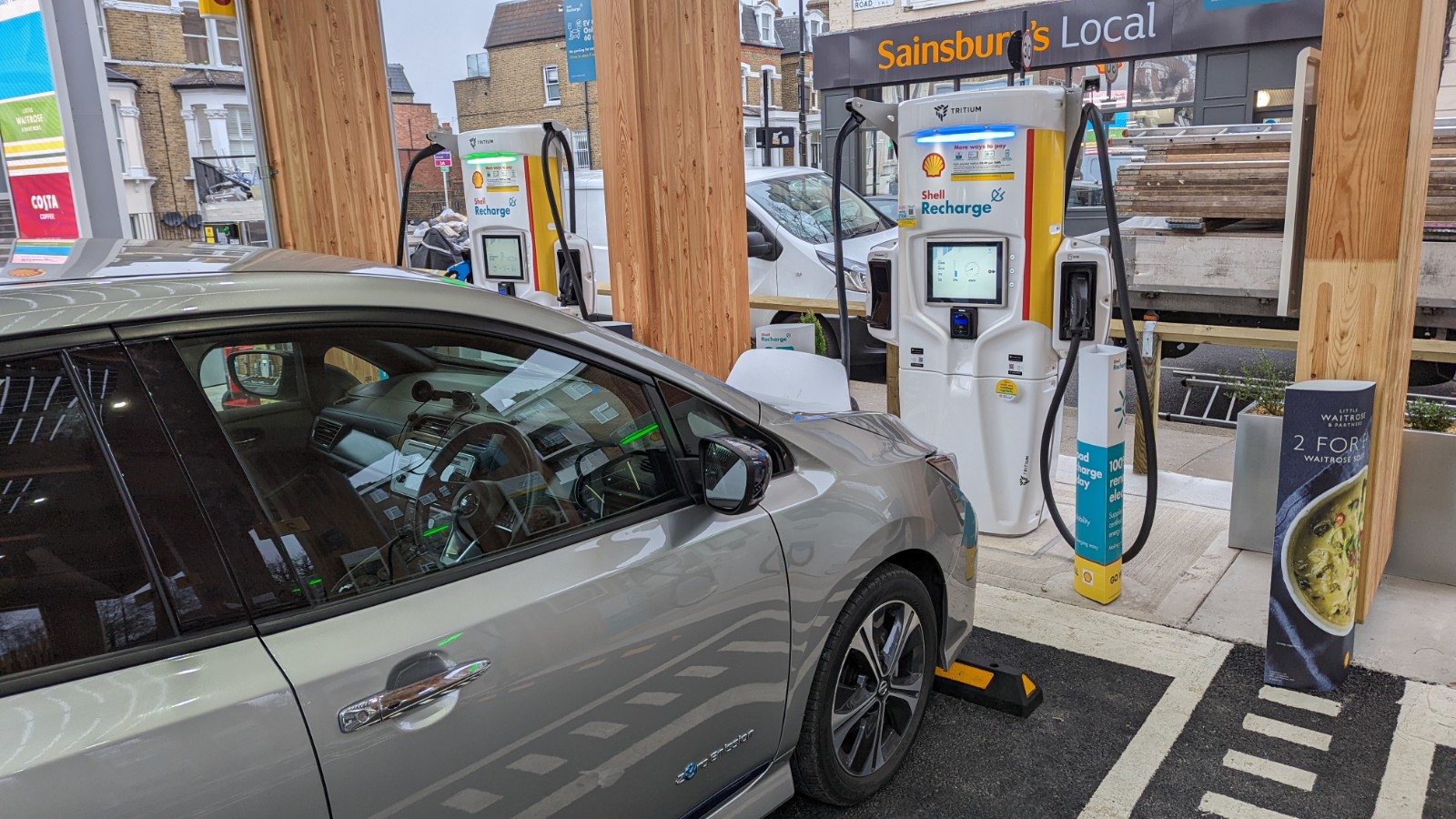
Electric cars live and die on their ability to be recharged. Gasoline-powered cars have been ubiquitous for so long that you won't struggle to find a gas station, no matter how far you drive from home. EV charging infrastructure has come a long way, but we’re not close to the same level of availability.
While we have seen an explosion in the number of individual chargers, some charging networks have developed their own “charging hubs,” Like a gas station forecourt with a few extra amenities, like bathrooms, and a series of rapid chargers instead of fuel pumps.
I’ve always been of the opinion that you should bring EV chargers to the people, rather than asking people to come to the chargers. But admittedly charging hubs aren’t very common, and until very recently they were all too far away to experience first hand.
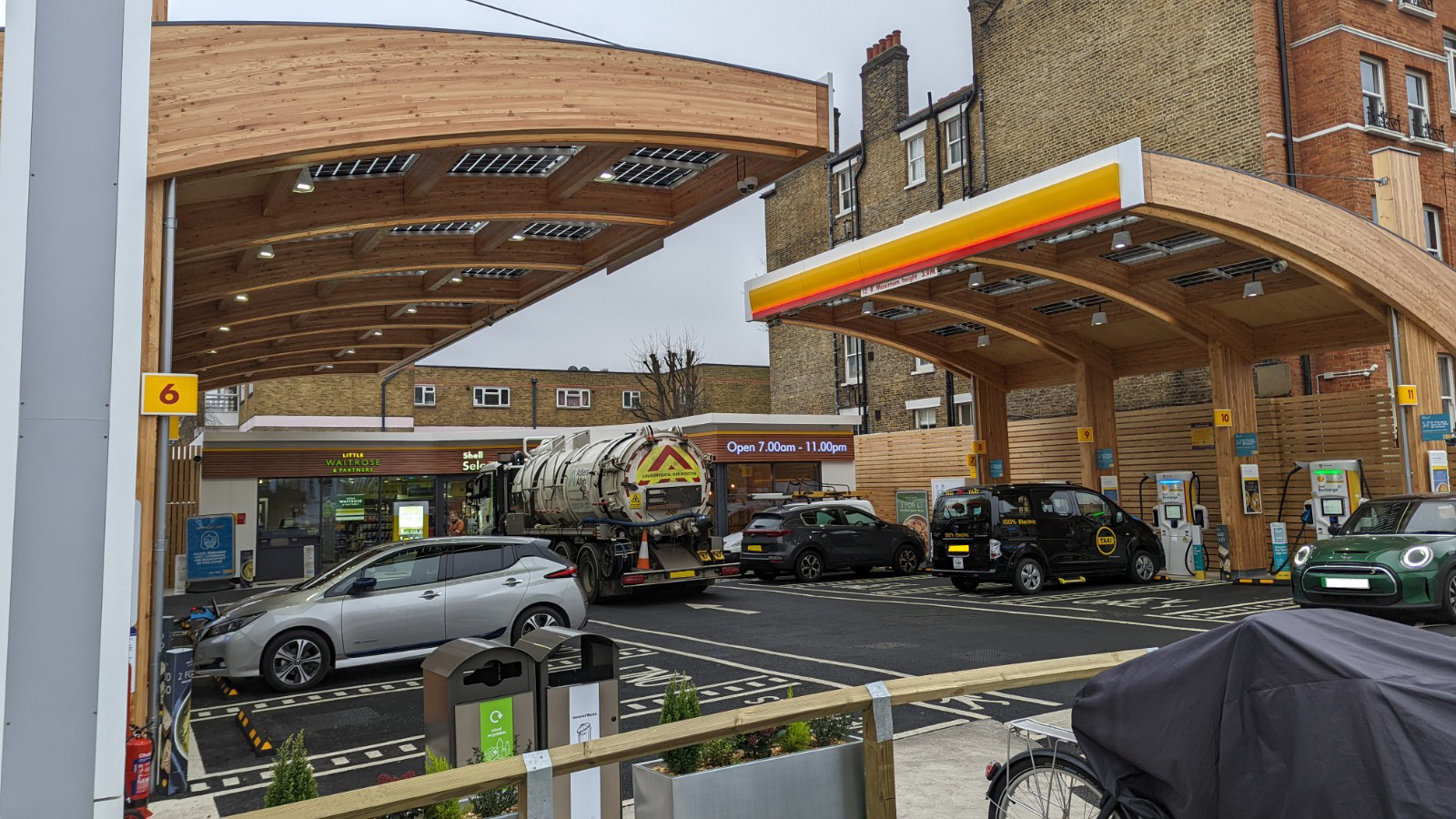
But at the tail end of last year, Shell opened up its first EV charging hub in Fulham, in West London. It’s still pretty out of the way for me, and the trip involves driving into the heart of the U.K.’s busiest city from nearby Reading. But it’s not so far that I couldn’t check this out for myself, just in case I’ve been totally wrong about EV charging this whole time.
And yes, for those that didn’t know, Shell the oil company is also in the EV charging business. So is BP, which is all really weird to think about.
So what does this Shell Recharge hub have to offer?
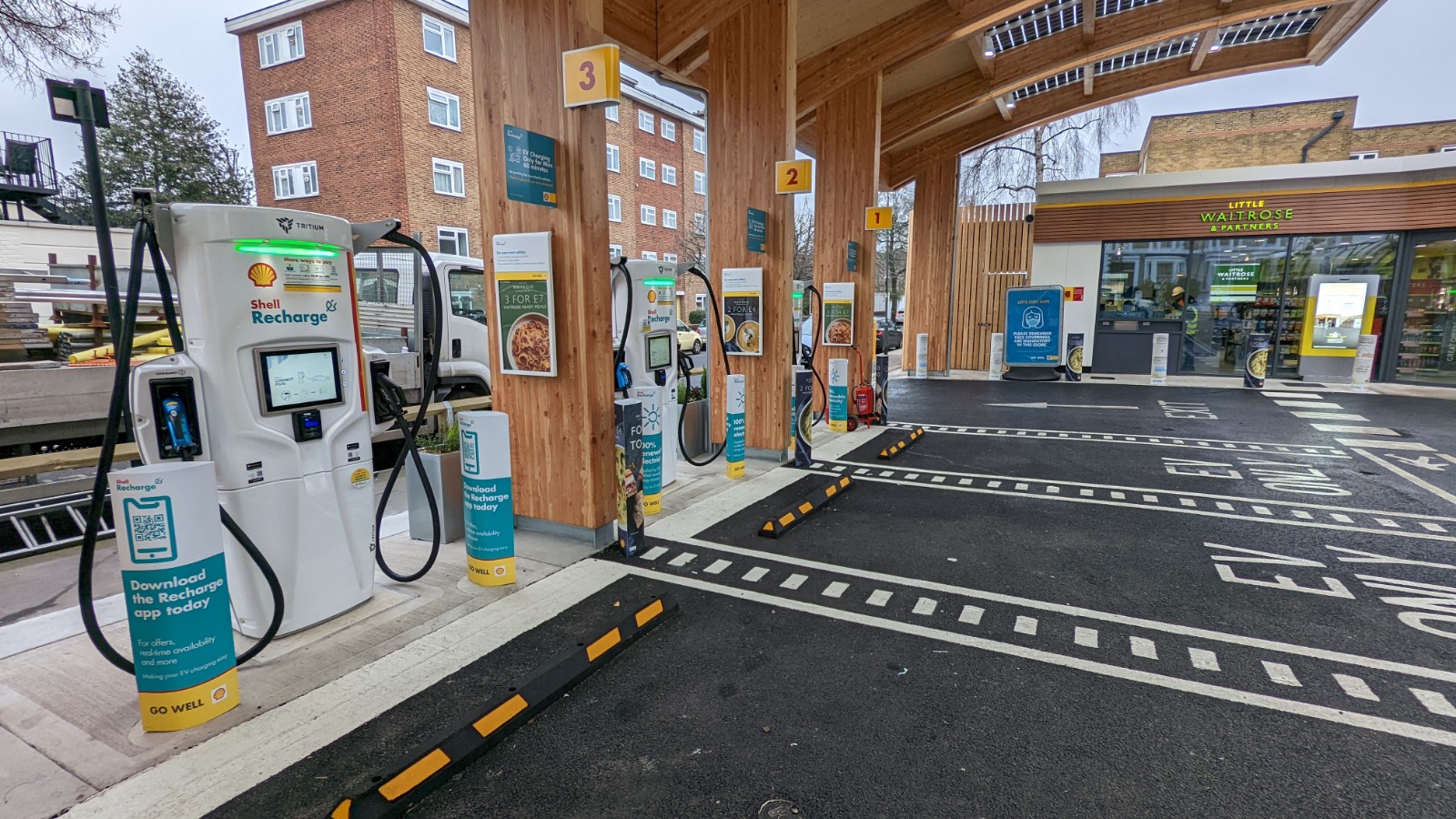
Shell currently offers 119 EV chargers across the U.K., including 65 rapid chargers and 54 “ultra-rapid” chargers (150kW speeds or above). It also operates chargers in other regions, like the U.S. and Canada, but in much fewer numbers. There are only seven in the United States, according to the Shell Recharge app.
The Fulham hub has nine chargers, offering speeds up to 175kW, all of which have both CCS and CHAdeMO connectors. That’s especially useful to me and all the other Nissan Leaf owners, since Nisan’s hatchback is one of the few remaining cars that doesn’t support the CCS charging standard. Every other automaker, including Tesla Europe, does.
Get instant access to breaking news, the hottest reviews, great deals and helpful tips.
According to Shell the Fulham hub uses 100% renewable energy, with on-site solar panels contributing around a quarter of its needs. Shell also brags that the canopy, which provides cover for cars and a home for the solar panels, is made from glued timber that requires less energy to produce and transport compared to steel. To me at least, that screams like Shell saying “please forget that we are still actively involved in the oil and gas industry.”
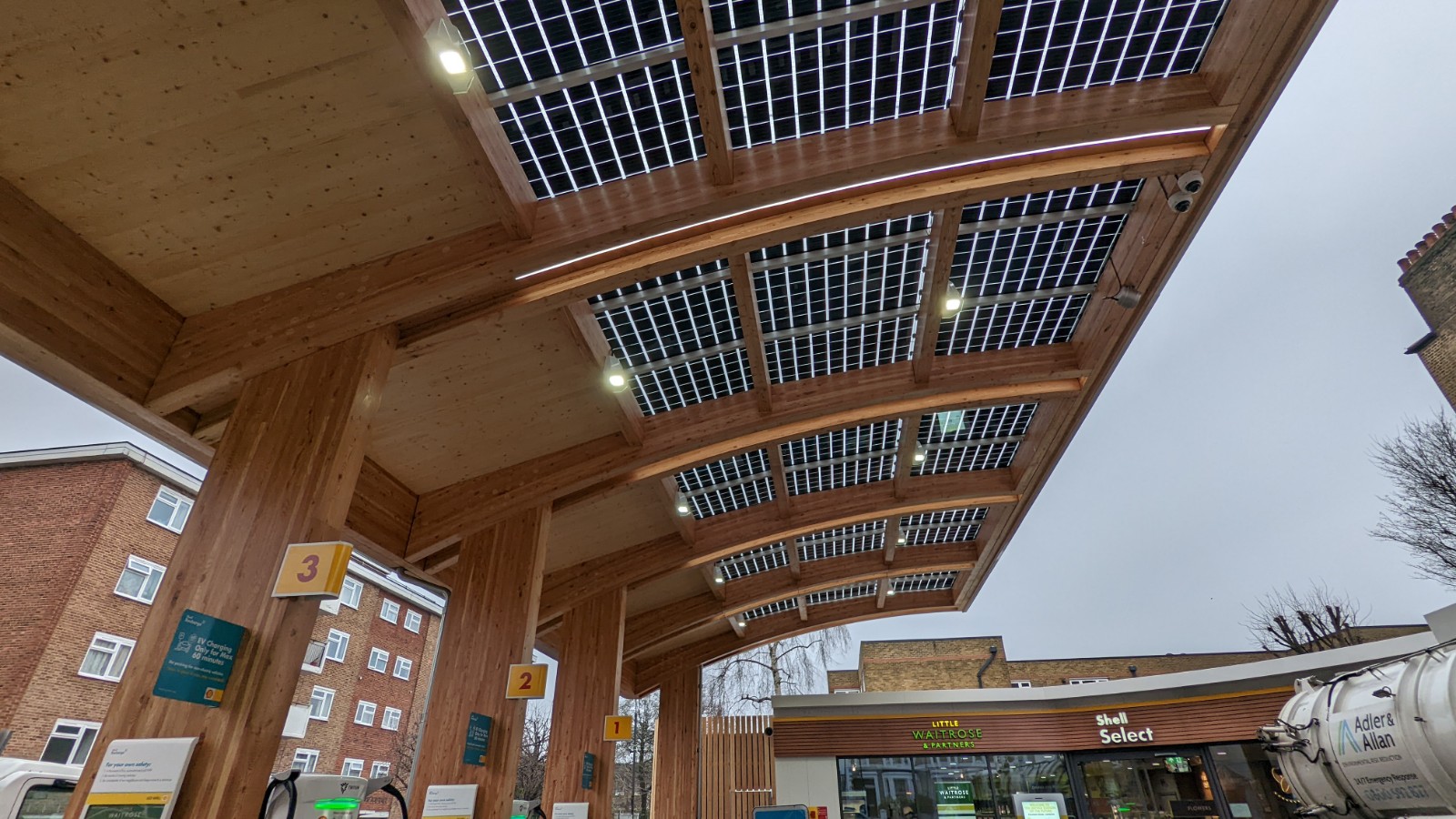
However, rather than just being a place with a lot of charges, the hub includes amenities to make the visit a little less boring. There’s a coffee shop with seating, bathrooms, a water bottle filling station, and a miniature supermarket. It’s a Little Waitrose, so you know this is supposed to be a classy, upscale establishment.
On top of that Shell’s chargers feature a large central display. This display has instructions on how to set up your charger, and once plugged in it switches to states clearly outlining various charging stats. That includes current charging speed and how much power you’ve received already. It does not, as far as I could tell, tell you how much the charging session has cost.
That’s kind of irritating, I must say; especially since you have to get in touch with customer service if you want a receipt.

Anyone that uses the Shell Recharge app to activate their charge gets to see charging stats on their phone — cost included. I couldn’t get the app to work, and it kept telling me I needed a Shell Recharge card. Considering there was a contactless reader on the machine itself, I just used my credit card like any normal person would.
I had to check my online banking, at which point I could see that the power cost me £7.56 (at £0.49 per kWh of power), plus what appears to be a £2.85 activation fee. Annoyingly, there was no mention of the activation fee at the site, or on the Shell website, but in my experience it’s a fairly common practice across charging networks.
Still I can appreciate a charger that has multiple payment options. Far too many charging networks live and die on their companion apps, and a lot of them are absolutely terrible. There are advantages to having a connected account, like keeping a log of when you charged and how much it cost. But nothing beats being able to slap your card against a terminal to get things started. Well, except maybe finding a free EV charger, which do exist in good numbers despite some stupid opposition.
How was the charging hub experience?

The main concern I’ve had with EV charging hubs is that they appear to treat electricity the same way they treat gasoline. After all, people were willing to travel to a gas station to refuel, why can’t they do it with electricity?
The key problem is that EV charging, even at ultra-fast speeds, is a time sink. You can’t just roll up, fill up, and be gone within a few minutes. You have to plug in and wait, and that’s something we just cannot avoid. Even the fastest charging cars need at least 15 minutes to recoup a meaningful amount of range - even longer if you want to charge your battery to the 80% mark.
Your typical gas station will usually have a small convenience store attached, maybe a public bathroom if you’re lucky. That’s because people typically don’t hang around longer than they have to. EV charging hubs don’t have that luxury, which is why it has the coffee shop, guaranteed bathroom access and a larger store than I’ve seen in any gas station throughout my life.
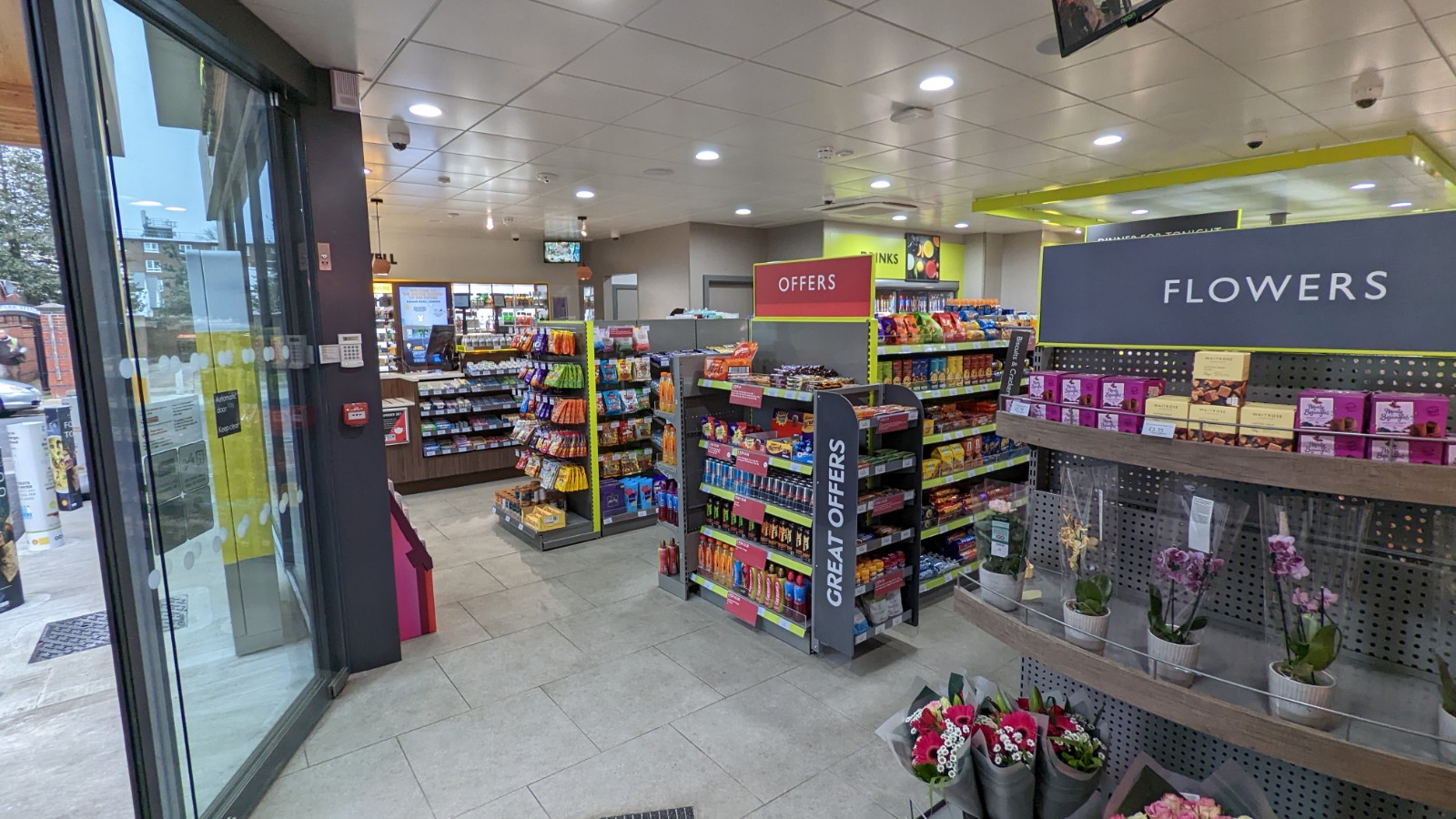
It’s essentially a small rest stop, like the one you’d find at the side of the highway. Albeit in the center of a major city, so there are other options if you think Waitrose is too pretentious.
Getting to the hub was the only real challenge. While London is not the worst city I’ve driven in, it’s not exactly a fun day out for the whole family. Once there I was able to pull into a charging bay, plug in, and tap my credit card against the reader.
It was a very painless experience, only really hampered by the fact the price was so high. £0.49 ($0.66). I’m used to rapid chargers being more expensive, but Shell Recharge is the most expensive I’ve ever seen. Back home a rapid charger will cost me £0.30 to £0.35 ($0.40 to $0.47) per kWh, depending on which company’s chargers I’m using. It’s not just London-centric inflation, either, since that is an all-too real problem in the English capital.
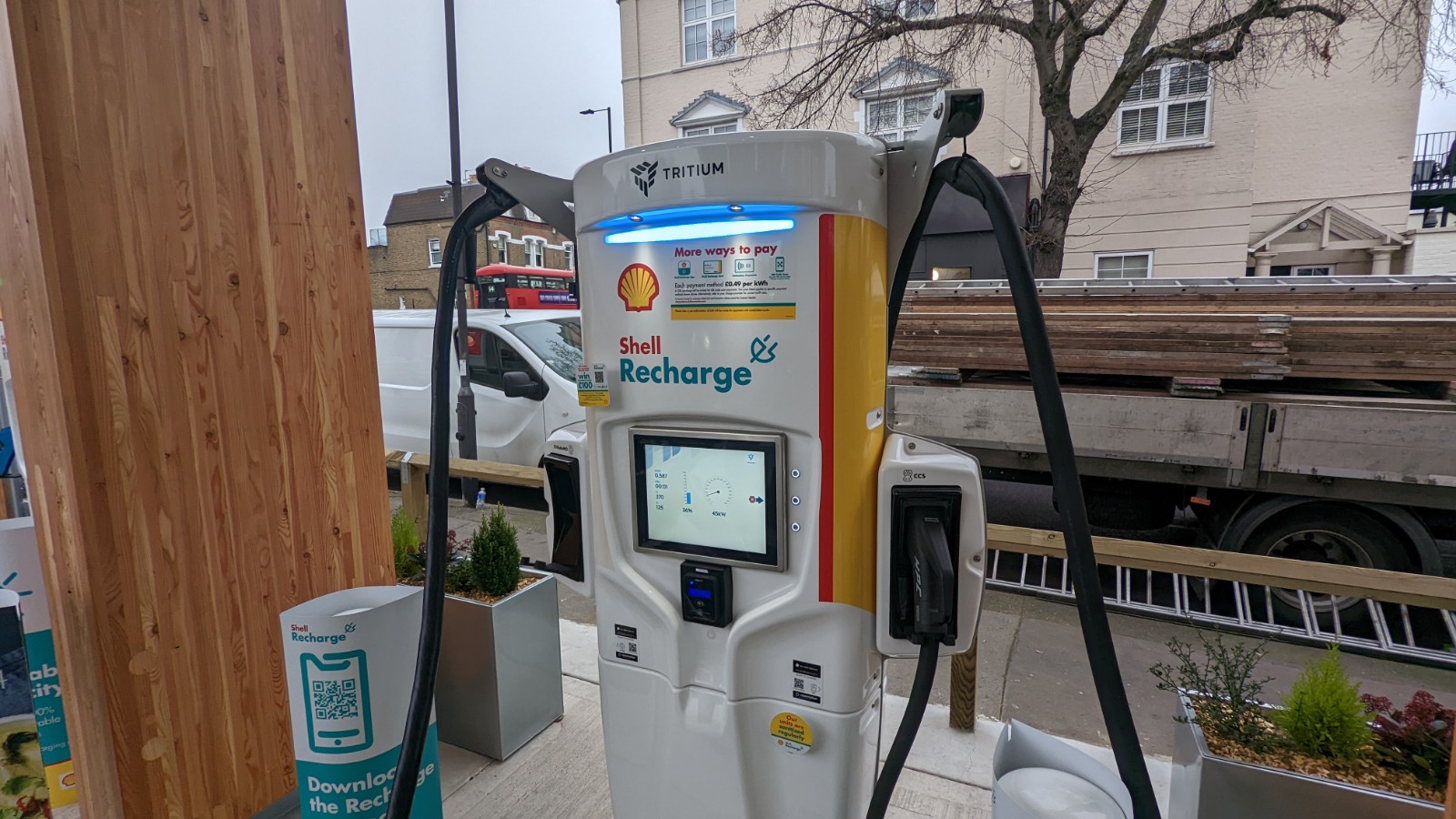
According to ZapMap, which lists the vast majority of available chargers, nearby rapid chargers were charging no more than £0.39 ($0.52) per kWh. It may not seem like a lot, but those extra pennies do add up over the course of a single charging session.
For instance, I used 15.4 kWh of power at the Shell hub and was charged £7.56 ($10.13) for it. Had I stayed at home and used the Gridserve rapid charger near my house, I would have paid £4.63 ($6.21) for the same amount of power. But this problem is specific to Shell, rather than the concept of EV charging hubs.
The hub also got pretty busy in the half hour I was there, with a variety of different vehicles showing up. So clearly not everyone has the same issues with price as me. Heck, there was even a Prius plugged in next to me, which goes to show these spots aren’t just useful for EV owners.
Though the fact it was an EV charging hub did not deter gasoline-powered drivers. Over the course of my half hour charging session at least two non-electric cars parked up and blocked access to a charger. Which tells me EV hubs, especially in areas with as poor parking capacity as London, are going to have to work hard to police this.
Bottom Line
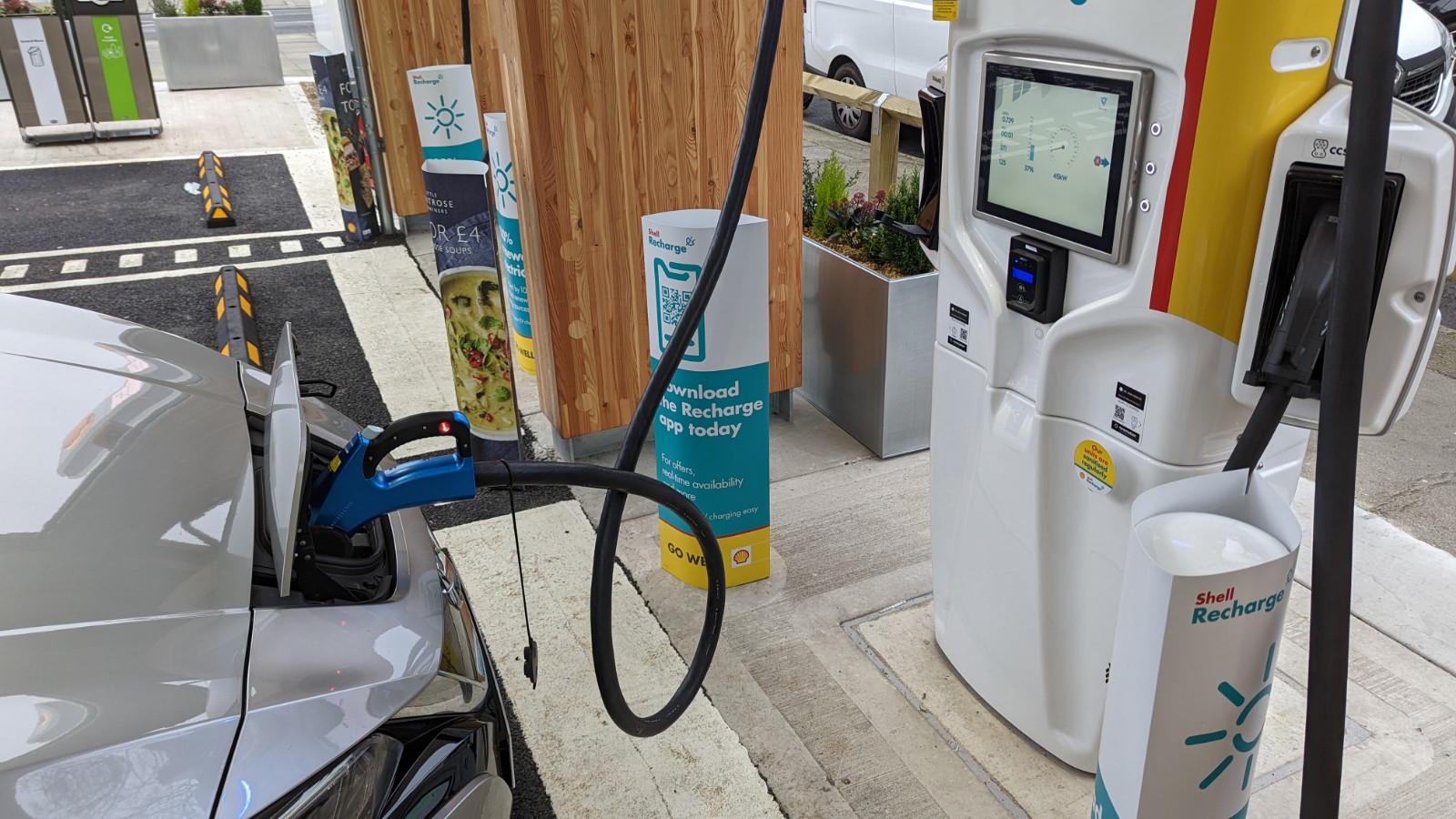
I’m never going to complain about more EV chargers being installed. The more people see the value in electric cars, the more chargers we will need to power them. Having multiple chargers in each place is one way to do that, rather than installing a single charger as a token gesture.
But having to physically go somewhere with the sole intention of recharging doesn’t feel like the right way to go. Certainly not for a rapid charger. The time it takes to recharge is just long enough that waiting is a chore, but not long enough to leave your car and do something else; leaving a car plugged in when it isn’t recharging is a jerk move.
While AC chargers may be much slower, you can at least plan around it. My car was able to recoup roughly 50% battery power while I sat down to see Spider-Man: No Way Home, and the only thing I had to suffer through were the pre-movie commercials. Plus slower charging helps preserve battery health in the long term.
Having more chargers is good, but it’s better to have those chargers in places that people are already driving to. Be it the supermarket, alongside the highways, or even outside movie theaters.
Still Shell got something very right, and that’s making sure charging isn’t a huge pain in the butt. Honestly, that’s just as important as building more physical chargers.

Tom is the Tom's Guide's UK Phones Editor, tackling the latest smartphone news and vocally expressing his opinions about upcoming features or changes. It's long way from his days as editor of Gizmodo UK, when pretty much everything was on the table. He’s usually found trying to squeeze another giant Lego set onto the shelf, draining very large cups of coffee, or complaining about how terrible his Smart TV is.
